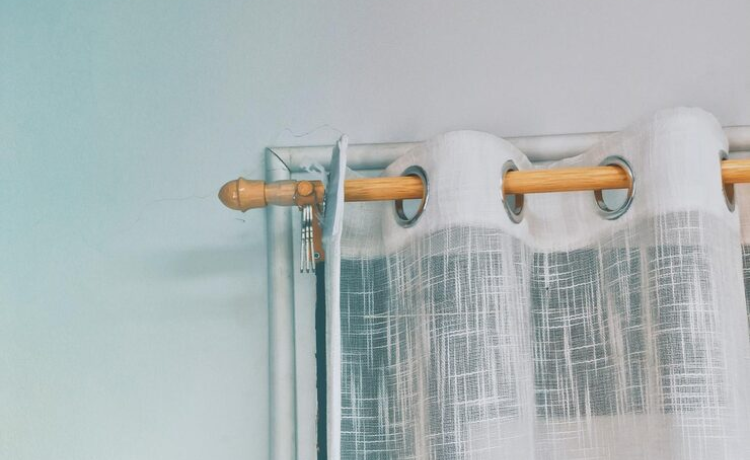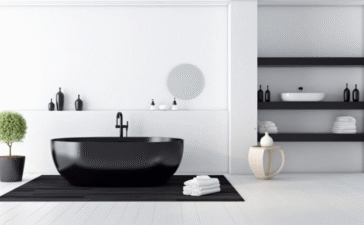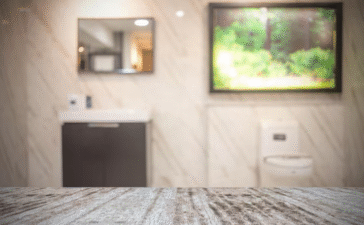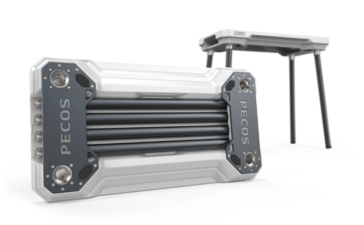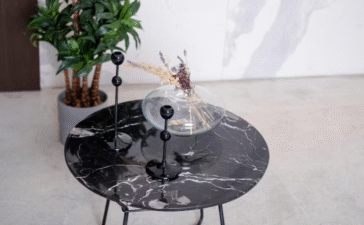Curtain rods serve as the backbone of any window treatment, and choosing the right hardware can transform your entire room’s aesthetic. Among the various materials available, wooden curtain rods continue to reign supreme as a timeless choice that complements virtually any interior design style.
Unlike their metal or plastic counterparts, wood curtain pole styles offer unmatched warmth and natural beauty that enhances both traditional and contemporary spaces. Whether you’re drawn to the rich grain of mahogany or the clean lines of birch, wooden curtain rods provide durability and sophistication that stands the test of time.
The versatility of wooden curtain rods extends beyond mere functionality. They serve as decorative elements that can anchor a room’s design scheme while supporting heavy draperies with ease. From rustic farmhouse kitchens to sleek modern living rooms, these classic fixtures adapt seamlessly to evolving home decor trends while maintaining their enduring appeal.
This comprehensive guide will walk you through everything you need to know about selecting, installing, and styling wooden curtain rods to create the perfect window treatment for your space.
What Are Wooden Curtain Rods?
Wooden curtain rods are window treatment hardware crafted from various wood species, designed to support and display curtains or drapes. Unlike metal rods that can feel cold and industrial, or plastic alternatives that may appear cheap, solid wood curtain rods bring organic warmth and natural character to any room.
The construction of wood curtain rod types varies significantly depending on the manufacturer and price point. Premium options feature solid hardwood construction, typically made from oak, mahogany, cherry, or walnut. These hardwood varieties offer superior strength and resistance to warping, making them ideal for supporting heavy window treatments across wide spans.
Softwood alternatives like pine and birch provide more budget-friendly options while still delivering authentic wood aesthetics. Pine rods work particularly well for lighter curtains and casual decor styles, while birch offers a smoother grain pattern that accepts stain beautifully.
The key distinction between hardwood vs softwood rods lies in their load-bearing capacity and longevity. Hardwood options resist sagging better over time and can support heavier fabrics without bowing, making them the preferred choice for formal draperies or extra-wide windows.
Popular Styles of Wooden Curtain Rods
Smooth vs. Fluted Rods
The surface treatment of your wooden curtain rod significantly impacts its visual appeal and compatibility with different decor styles. Smooth rods feature clean, unadorned surfaces that highlight the natural wood grain. These work exceptionally well in contemporary and minimalist settings where simplicity takes precedence.
Fluted wood rods, on the other hand, incorporate decorative grooves or ridges that add texture and visual interest. The vertical lines created by fluting can make windows appear taller while adding a touch of classical elegance that complements traditional furniture and architectural details.
Classic, Rustic, and Mid-Century Modern Looks
Wooden curtain rods adapt beautifully to various design aesthetics through careful selection of wood species, finish, and styling details. Classic interpretations often feature rich mahogany or cherry wood with traditional finials and brass accents, creating an timeless elegance suitable for formal dining rooms or traditional living spaces.
Rustic wood curtain rods embrace the natural imperfections and character marks that give wood its authentic appeal. These often feature live-edge details, distressed finishes, or reclaimed wood construction that perfectly complements farmhouse, cabin, or industrial decor themes.
Mid-century modern applications favor cleaner lines and lighter wood tones like walnut or teak. These rods typically feature geometric finials and sleek mounting hardware that emphasizes horizontal lines and uncluttered aesthetics.
Double vs. Single Rods
The choice between single and double curtain pole configurations depends largely on your functional needs and layering preferences. Single rods work perfectly for standalone window treatments like heavy drapes, casual curtains, or decorative panels.
Double curtain pole systems excel when you need layered window treatments combining sheer and blackout functionality. The front rod typically supports decorative panels or sheers that filter light during the day, while the back rod holds room-darkening or thermal curtains for privacy and insulation. This modern curtain hardware approach maximizes both form and function while providing ultimate light control flexibility.
Choosing the Right Size and Length
Selecting appropriate dimensions for your wooden curtain rod requires careful consideration of both your window measurements and the weight of your chosen curtains. Standard residential rods typically come in three primary length categories: 48-84 inches for smaller windows, 84-120 inches for standard to large windows, and 10-foot or custom lengths for oversized openings or wall-to-wall installations.
The diameter of your rod plays a crucial role in both aesthetics and performance. Standard 1 3/8-inch diameter rods work well for lightweight to medium-weight curtains and provide a more delicate appearance that suits traditional or feminine decor styles. These smaller thick curtain rods typically handle curtains up to 10 pounds per rod.
Heavy-duty applications require 2-inch diameter rods, which can support substantial draperies weighing 15-20 pounds or more. These large window rods also create a more substantial visual presence that works particularly well in rooms with high ceilings or grand architectural features.
When planning extra-long wood curtain rod installations, pay special attention to the curtain rod span capabilities of your chosen material. Hardwoods like oak or maple resist sagging better than softwoods across long distances. For spans exceeding 8 feet, consider adding a center support bracket to prevent drooping, regardless of the wood species selected.
Finishes and Accessories That Complete the Look
Finials: Ball, Acorn, Scroll
The finials you choose serve as the crowning detail that can make or break your curtain rod’s overall aesthetic impact. Ball finials offer classic simplicity that works across multiple design styles, from traditional to contemporary. Their clean geometric form never goes out of style and complements both smooth and fluted rod designs.
Acorn finials bring natural charm that particularly suits rustic, traditional, or nature-inspired decor themes. The organic curves and subtle detailing of quality wood finials for curtain rods add visual interest without overwhelming the overall design scheme.
Scroll finials provide the most ornate option, featuring curved decorative elements that work beautifully in formal or traditional settings. These elaborate designs require careful consideration to ensure they complement rather than compete with other decorative elements in your room.
Wood Brackets and Mounting Options
Proper mounting hardware ensures both the safety and longevity of your wooden curtain rod installation. Wood drapery brackets come in various styles, from simple utilitarian designs to decorative options that serve as visual elements in their own right.
Standard mounting brackets typically feature metal construction with wood-toned finishes that coordinate with your rod. For heavier installations or longer spans, look for brackets with reinforced mounting plates and multiple screw holes for maximum wall attachment strength.
Decorative brackets elevate the entire installation by incorporating carved details, turned elements, or architectural features that complement your rod and finials. These premium options work particularly well when your curtain rod will be visible above the window treatment.
Curtain Rings, Hooks, and Holdbacks
The method you choose for attaching curtains to your wooden rod affects both functionality and appearance. Wooden curtain rod rings provide the most traditional approach, creating smooth operation while maintaining material consistency throughout the installation.
Metal rings offer durability advantages and can introduce accent colors like brass, bronze, or black iron that coordinate with other hardware elements in your room. The key lies in selecting rings with appropriate interior dimensions to glide smoothly along your rod’s diameter.
Curtain clips provide versatility for hanging various fabric types without requiring sewn rod pockets or tab tops. This approach works particularly well for casual treatments or when you want to change curtains seasonally without alteration.
Material Comparison: Real Wood vs Wood Veneer
Understanding the construction differences between solid wood and veneer options helps you make informed decisions based on your budget, performance requirements, and aesthetic preferences. Real wood curtain rods feature solid wood construction throughout, providing maximum authenticity and long-term durability.
Solid wood options showcase the complete beauty of natural grain patterns while offering superior strength characteristics. These sag-resistant rods maintain their shape over time and can be refinished multiple times throughout their lifespan, making them excellent long-term investments.
Wood veneer curtain rod alternatives feature thin wood veneers applied over engineered cores, often metal or composite materials. This construction approach reduces costs while still providing authentic wood appearance on visible surfaces.
The performance advantages of veneer-over-metal designs include enhanced sag resistance and lighter weight, which can simplify installation requirements. However, curtain rod durability may be compromised if the veneer becomes damaged, as refinishing options are limited compared to solid wood alternatives.
Maintenance requirements differ significantly between these options. Solid wood rods can be sanded and refinished to address wear or style changes, while veneer options typically require replacement when surface damage occurs.
Trusted Brands and Where to Buy
Kirsch Wood Trends Collection
Kirsch has established itself as a leading manufacturer of quality window treatment hardware, with their Wood Trends collection offering premium wooden curtain rod options. These Kirsch curtain rods feature solid hardwood construction with professional-grade finishes that resist fading and wear over time.
The collection includes multiple diameter options, extensive length selections, and coordinating accessories that ensure complete design cohesion. Quality control standards typically exceed those of mass-market alternatives, resulting in straighter rods, smoother finishes, and more precise tolerances.
Pottery Barn, Restoration Hardware, and Local Makers
Major home furnishing retailers like Pottery Barn and Restoration Hardware offer curated selections of designer wood curtain rods that emphasize style and quality. These retailers often provide exclusive finishes and coordinating accessories that simplify the selection process for homeowners seeking cohesive looks.
Local woodworkers and craftsmen provide opportunities for truly custom curtain rod sets tailored to your specific requirements. These artisans can create unique wood species combinations, custom dimensions, and personalized details that mass-produced alternatives cannot match.
Custom Orders from Etsy or Woodworkers
Online marketplaces like Etsy connect homeowners with skilled woodworkers who specialize in custom curtain rod fabrication. This approach allows for unique wood selections, non-standard dimensions, and personalized design elements that reflect your individual style preferences.
When ordering custom pieces, carefully review maker credentials, previous customer feedback, and finish samples to ensure quality expectations align with final deliverables. Communication throughout the process helps prevent misunderstandings and ensures satisfaction with your investment.
DIY Wooden Curtain Rod Ideas
Creating your own wooden curtain rods offers opportunities for significant cost savings while achieving completely customized results. DIY wood curtain rod projects can range from simple adaptations of standard lumber to elaborate turned designs requiring advanced woodworking skills.
Basic approaches might involve purchasing quality hardwood dowels from lumber suppliers and creating custom finials from turned wooden balls or carved elements. This how to make curtain rods method provides authentic wood construction at a fraction of retail costs while allowing complete control over dimensions and finishes.
More advanced homemade curtain rod ideas might incorporate reclaimed barn wood, driftwood, or unique species like bamboo for distinctive natural appeal. These projects require careful attention to structural integrity, particularly for longer spans or heavier curtain applications.
Safety considerations include proper mounting bracket selection, adequate wall anchoring, and realistic assessment of weight limitations. Even beautifully crafted DIY rods can fail if installation methods don’t provide sufficient support for the intended application.
Custom staining and painting opportunities allow perfect color matching with existing decor while potentially creating unique finishes unavailable in commercial products. Proper surface preparation and quality finishing materials ensure professional-looking results that enhance rather than detract from your overall design scheme.
Installation Tips for Long-Lasting Support
Proper installation techniques ensure your wooden curtain rods provide years of reliable service while maintaining their attractive appearance. This curtain rod installation guide covers essential steps for achieving professional results with standard household tools.
Begin by carefully measuring your window opening and determining optimal rod placement. Generally, rods should extend 4-6 inches beyond each side of the window frame to allow curtains to clear the glass completely when opened. Height placement typically falls 4-8 inches above the window frame, depending on ceiling height and desired proportions.
Wood rod brackets require secure attachment to wall studs whenever possible, particularly for heavy curtain applications or long spans. Use a stud finder to locate framing members, and select appropriate fasteners based on your wall construction. Hollow wall applications may require toggle bolts or molly bolts for adequate support.
Leveling curtain hardware prevents operational problems and unsightly appearance issues. Use a quality level during bracket installation, and double-check measurements before drilling final holes. Minor adjustments during installation are much easier than relocating brackets after completion.
Pre-drilling mounting holes prevents wood splitting and ensures accurate fastener placement. Select drill bits slightly smaller than your screw diameter, and periodically check alignment throughout the process.
You would also like: “Christmas Shower Curtain“
Are Wooden Curtain Rods Right for Your Home?
Wooden curtain rods excel in situations where natural warmth, classic styling, and long-term durability take priority over minimal cost or ultra-modern aesthetics. These fixtures work particularly well in homes featuring natural materials, traditional architecture, or decor schemes emphasizing organic textures and earth tones.
Consider wooden options when you’re planning permanent or semi-permanent window treatments that will remain in place for years rather than seasonal changes. The investment in quality wood hardware pays dividends through extended lifespan and timeless appeal that transcends temporary design trends.
Maintenance requirements for wooden curtain rods remain minimal with occasional dusting and periodic conditioning with appropriate wood care products. This level of care preserves the natural beauty while preventing drying or cracking that might compromise structural integrity.
Budget considerations should account for both initial costs and long-term value. While quality wooden curtain rods typically cost more upfront than basic alternatives, their durability and refinishing potential often provide better value over time.
The versatility of wooden curtain rods makes them suitable for virtually any room in your home, from formal living spaces to casual bedrooms. Their ability to complement both heavy draperies and lightweight sheers provides flexibility as your needs and preferences evolve.
Frequently Asked Questions
What diameter curtain rod should I choose?
The ideal diameter depends on your curtain weight and desired aesthetic. Use 1 3/8-inch rods for lightweight to medium curtains up to 10 pounds, and 2-inch diameter rods for heavy draperies or when you prefer a more substantial appearance. Longer spans typically benefit from larger diameters to prevent sagging.
Can wooden curtain rods hold blackout curtains?
Yes, quality wooden curtain rods can easily support blackout curtains when properly sized and installed. Choose hardwood construction with appropriate diameter for your span length, and ensure brackets are securely mounted to wall studs. Heavy blackout panels may require 2-inch diameter rods for optimal performance.
What’s the difference between a fluted and smooth rod?
Fluted rods feature decorative vertical grooves that add texture and visual interest, while smooth rods showcase natural wood grain without additional surface treatment. Fluted designs complement traditional decor styles and can make windows appear taller, while smooth rods work better in contemporary or minimalist settings.
How do I hang extra-long curtain rods?
Extra-long installations require careful planning and often benefit from center support brackets to prevent sagging. Choose hardwood construction over softwood for better span capability, and ensure all mounting points attach to solid framing. Consider telescoping designs for easier handling during installation.
Do I need special brackets for wooden curtain rods?
While standard metal brackets work for most installations, decorative wooden or coordinating metal brackets enhance the overall appearance. Heavy-duty brackets become essential for long spans or heavy curtains, and adjustable options provide flexibility for precise positioning during installation
